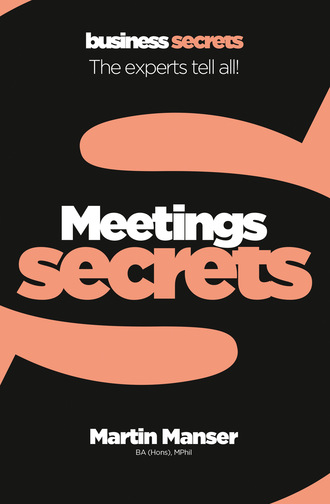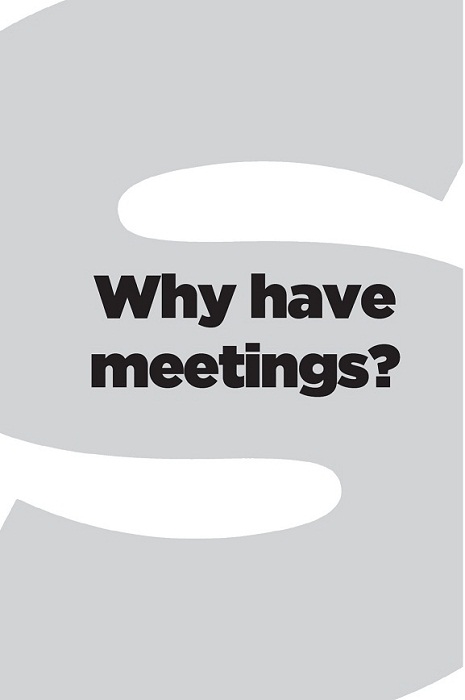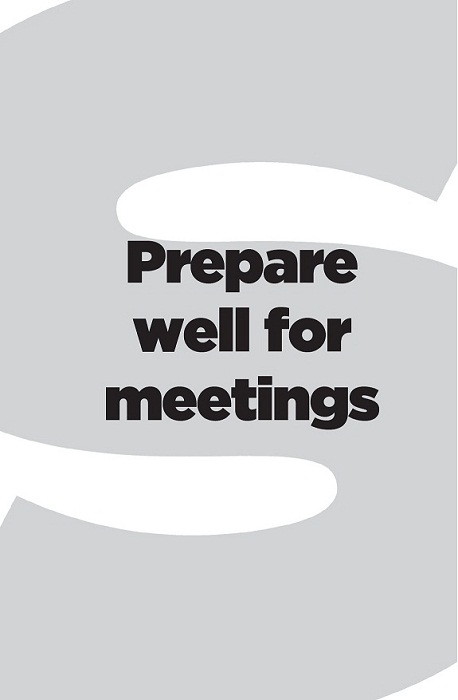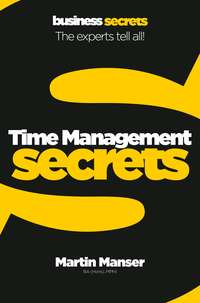
Полная версия
Meetings

MEETINGS SECRETS
Martin Manser

Copyright
William Collins
An imprint of HarperCollinsPublishers
1 London Bridge Street
London SE1 9GF
WilliamCollinsBooks.com
This eBook first published in Great Britain by William Collins in 2020
First published in Great Britain in 2020 by HarperCollinsPublishers
Published in Canada by HarperCollinsCanada. www.harpercollins.ca
Published in Australia by HarperCollinsAustralia. www.harpercollins.au
Published in India by HarperCollinsPublishersIndia. www.harpercollins.co.in
Copyright © HarperCollinsPublishers 2020
Martin Manser asserts the moral right to be identified as the author of this work.
A catalogue record for this book is available from the British Library.
All rights reserved under International and Pan-American Copyright Conventions. By payment of the required fees, you have been granted the non-exclusive, non-transferable right to access and read the text of this e-book on-screen. No part of this text may be reproduced, transmitted, down-loaded, decompiled, reverse engineered, or stored in or introduced into any information storage and retrieval system, in any form or by any means, whether electronic or mechanical, now known or hereinafter invented, without the express written permission of HarperCollins.
Source ISBN: 9780008389895
Ebook Edition © January 2020 ISBN: 9780008133825
Version: 2019-11-18
Contents
Cover
Title Page
Copyright
Introduction
1 Why have meetings?
1.1 Know your purpose
1.2 What can go wrong in meetings?
1.3 Calculate the cost of meetings
1.4 Who makes decisions in meetings?
1.5 Know the different roles
2 Prepare well for meetings
2.1 Make the practical arrangements
2.2 Invite the relevant people
2.3 Plan an agenda
2.4 Prepare for a meeting
2.5 Prepare for negotiations
2.6 On the day of the meeting
3 Chairing a meeting
3.1 Before the meeting
3.2 Guide the meeting skilfully
3.3 Get out of a rut
3.4 Come to a decision firmly
3.5 Have SMART action points
3.6 Manage change well
3.7 Develop your skills as chair
4 Taking minutes
4.1 Before the meeting
4.2 During the meeting
4.3 After the meeting
4.4 Write up the minutes
4.5 Develop your skills as minute-taker
5 Giving a presentation
5.1 Know the aims of your presentation
5.2 Think and plan creatively
5.3 Work on your words
5.4 Plan your beginning, middle and end
5.5 Use PowerPoint wisely
5.6 Present tables and charts skilfully
5.7 Manage your nerves
5.8 Be aware of your body language
5.9 Control your voice
5.10 Deal with questions
6 Taking part in a meeting
6.1 Participate actively
6.2 Remember names
6.3 Think creatively
6.4 Listen well
6.5 Speak persuasively
6.6 Discuss positively
6.7 Conduct your negotiations
6.8 Finalize your negotiations
6.9 A phone call is a meeting
6.10 Video conferencing
6.11 Revive your meeting
7 After the meeting
7.1 Communicate decisions well
7.2 Move forward
7.3 Keep up momentum between meetings
7.4 Check your progress regularly
7.5 Maintain good relationships
7.6 Evaluate your meeting
Footnotes
Jargon buster
Further reading
About the Book
About the Author
About the Publisher
Learn how to run an effective meeting
Meetings! Think how many business meetings you’ve been to. It’s very easy to focus on the negative side of how time has been wasted and colleagues have been discouraged. The aim of this book, however, is to help you move ahead positively and to suggest ways in which you can make meetings even more useful.
I write as someone who has chaired meetings, taken minutes and sat as an active participant in countless meetings in the business world and also in schools and charities over the last four decades. But I also write as one who is not a natural leader, even though I have been called upon to chair meetings, take the minutes (sometimes at the same time as chairing!), so I have learnt certain skills. It is these that I want to pass on to you: if I have learnt to do it, I believe you can too.
This book contains 50 secrets of success, spread over seven chapters. These are:
1 Why have meetings? We begin by asking the basic question. What is the purpose of meetings? Meetings cost money: how much? It is important to know what are the different roles that colleagues have. 2 Prepare well for meetings. You need to make sure that all the practical arrangements have been made but you also need to spend time preparing yourself for the meeting. If an important part of the meeting is negotiating, then you need to give special attention to preparing for that, too. 3 Chairing a meeting. The chair’s role is vital in ensuring that the meeting runs well and achieves its aim by guiding it skilfully, providing direction, making progress and reaching decisions firmly. 4 Taking minutes. To write the minutes of a meeting, you need to develop certain skills, such as listening well and noting the relevant points. You will then be able to write them up effectively after the meeting. 5 Giving a presentation. If the thought of giving a presentation at a meeting fills you with dread, then you need to follow the steps given here to relieve your fears and help you become more confident. 6 Taking part in a meeting. Everyone has a role to play in the meeting, even if you’re not the chair or minute-taker. You can make a positive contribution by participating fully, listening well, discussing positively, speaking persuasively and negotiating successfully. 7 After the meeting. Even though the meeting has finished, that isn’t the end. You need to build on all your preparation and hard work to ensure that the actions are followed through well and that the work makes good progress.Whatever your role in a meeting, you can become more confident.

There are many different kinds of meeting: for example, an appraisal to consider individual performance and set goals and targets for the future, a team meeting to consider the work of the team, a conference at which experts give papers on a specialist subject, or a large Annual General Meeting to review a year’s work in a company or organization.
But whatever their format or length, meetings all have certain features in common: you need to know their purpose, prepare for them carefully, conduct them well and follow them up effectively for them to be considered successful.
1.1
Know your purpose
It may seem unnecessary to discuss the purpose of meetings, but it is a question that has probably occurred to you when you are in the middle of a long, boring meeting: ‘Why am I here? What are we actually achieving?’ So before the meeting starts, you need to work out what you want to achieve during the meeting.
Asking ‘What is the purpose of this meeting?’ is probably the most important question that you can ask as you plan, prepare for or go into a meeting: what is its aim? What exactly are you trying to achieve? One thing is certain: if you don’t know the purpose of your meeting before you begin it, it’s unlikely that you’ll achieve a purpose while the meeting is taking place and before it ends. Further, how will you know if the meeting had been successful if you don’t know what you’re aiming to achieve?
Here are some possible aims of meetings:
▪ to give information, e.g. to inform colleagues of progress or introduce new products or services
▪ to review progress on a project
▪ to negotiate details of a contract
one minute wonder Think of the next meeting you are to attend. What is its purpose?
▪ to negotiate arrangements, e.g. financial or in politics
▪ to discuss a proposal for a future project
▪ to assess and evaluate different strategies or ways of dealing with a problem or a dispute
▪ to review and approve a certain course of action or a set of accounts
▪ to come to a decision on a proposal and agree what to do next
▪ to choose new members of a committee, board, leadership group, etc.
▪ to listen to or give a talk or presentation on a subject
▪ to develop a sense of team identity and encourage more effective teamwork
Keep the aims of your meeting simple and clear.
1.2
What can go wrong in meetings?
If we look at some of the things that can go wrong in a meeting, then we can learn from mistakes.
▪ inappropriate time of meeting, e.g. just before the end of the day
▪ the meeting is called at short notice
▪ poor or no agenda
▪ unclear purpose of meeting
▪ spending time during the meeting reading background reports
▪ not having enough copies of papers or reports for all participants
▪ participants arrive late
▪ wrong people present
▪ people who have authority to make decisions are not present
▪ unclear roles
▪ noisy venue; room too hot or too cold
▪ seating unhelpful for discussion
▪ some people talk too much; others talk too little
▪ participants are not prepared
▪ no follow-up from previous meeting
▪ participants do not reach conclusions or decisions
▪ participants do not decide actions or who is responsible for them
▪ poor or no chair
▪ discussion is in too much detail
▪ meeting goes on too long: no breaks
▪ new people present but no one introduces them
▪ participants use jargon that is not known to all participants
▪ participants do not really listen to one another
▪ participants talk to each other during the meeting
▪ distractions during the meeting, e.g. mobile phones ringing
▪ participants not being open to change their minds
▪ participants misinterpret others’ comments
▪ disagreement or conflict becomes personal
▪ too many people are talking at the same time
▪ technical issues
▪ decisions poorly communicated after the meeting
Most of these can be solved by:
▪ better chairing of the meeting
▪ better preparation before the meeting.
case study Larry was called in to solve the problems at the company. He was present at a meeting of the Senior Management Team (SMT). He asked them for the agenda of the meeting and was told there wasn’t one. He asked them for the actions decided at the previous meeting and was told that no minutes had been taken. It was hardly surprising that the company was in a complete mess. Fortunately, Larry knew members of the SMT well, so he could make changes easily and put structures in place, so within a few months the company was making good progress.
Most of the problems with meetings can be solved by better preparation.
1.3
Calculate the cost of meetings
Let’s stand back and look at how much meetings actually cost. Suppose there are eight managers in a meeting that lasts three hours. How much do you think the meeting will cost?
Suppose each manager’s salary is £30,000.
£30,000 ÷ 48 (52 weeks in the year minus 4 for holidays) = £625 per week.
£625 ÷ 5 = £125 per day. So £125 is what each manager receives as gross pay per day, before tax or other deductions.
Now let’s work out the hourly rate of pay received. Managers may be in the office for seven hours but how many of those are actually productive? Let’s say five so we have £125 ÷ 5 = £25 per hour: this is the amount of gross pay that a manager is paid per hour.
But we need to multiply £25 by approximately 3 (some colleagues have suggested 2.7; others have suggested 5) to account for general business expenses. We need to think not only of the salaries of those concerned but also of the general costs to the company or organization of each individual’s time. Someone has to pay for electricity, cleaning, buildings and employees’ insurance, and government taxes. These could be allocated to each individual. Such general business expenses are referred to as overheads.
“Time is money”
Benjamin Franklin (1706–90), American statesman, scientist and author: Advice to a Young Tradesman (1748)
one minute wonder In a meeting, I sometimes think that I’m in a taxi and I’m watching the meter go up minute by minute for the fare I will be charged. I can see that time costs money. In the same way, meetings cost money.
£25 pounds x 3 = £75. So £75 is the cost per hour of one manager. Now suppose the meeting lasts three hours and eight managers attend it, then the cost of the meeting is £75 x 3 ×8 = £1800.
This figure is probably higher than you thought.
It also has certain effects: suppose seven managers are waiting for one manager who is 10 minutes late. The amount of money that is wasted while waiting for the late colleague is £88, i.e. £75 ÷ 6 (for 10 minutes) x 6 colleagues = £75.
Suppose also that during the meeting the chairman says that time did not allow them to circulate the paper in advance so every member of the meeting now has to spend 5 minutes reading through the paper, then that costs £75 ÷ 12 (for 5 minutes) x 8 = £50.
This means that you should keep your meetings as short as possible to avoid wasting resources.
Keep your meetings as short as possible to avoid wasting resources.
1.4
Who makes decisions in meetings?
Who is responsible for making a decision in your company or organization?
It can be helpful to consider who it is that makes decisions in a meeting: do all colleagues or only some colleagues make the decisions?
The acronym RACI can be used in this discussion.
▪ R those who are Responsible: the colleagues who will be actually doing the task.
▪ A those who are Accountable: those with ultimate authority for the decision, and who could be blamed if it goes wrong.
▪ C those who are Consulted: those colleagues, e.g. consultants, who can give expert advice or others affected by the decision – for instance, those involved in a project or certain stakeholders, such as suppliers or trade unions. Such colleagues are consulted about decisions but do not actually make the decisions themselves.
▪ I those who are Informed: colleagues who only need to be informed about the decisions that have already been made, but need not be consulted and are not responsible for making the actual decision.
Some authorities also add O for Omit for those colleagues who do not need to be informed or consulted about the decision and are not responsible for it, to make the acronym CAIRO (Consulted, Accountable, Informed, Responsible, Omit).
one minute wonder You should support a decision that has been agreed, even if you don’t agree with it.
The significance of this is that time can be wasted and roles confused unless it is clear who it is that actually makes the decision.
You should also consider how decisions are made in your company or organization:
▪ Are decisions made by the leader? This can often be quick and efficient but could be considered harsh as colleagues may not have been involved and may not feel valued as their views are not sought.
▪ Are decisions made by a majority? This can be considered fair but the minority may be reluctant to put the decision into action.
▪ Are decisions made by general agreement (consensus)? This has the disadvantage that it may take a long time to win over each colleague but it has the advantage that colleagues will feel committed to putting them into action as they have been part of the decision-making process.
It is important to be clear about who makes the decision. If you are not clear on this, roles may become confused and time will be wasted.
1.5
Know the different roles
It is important to know the different roles that need to be fulfilled to make sure that a meeting runs smoothly.
The key roles in a meeting are:
▪ The chair, who works with other colleagues to help prepare the agenda, welcomes newcomers, builds good relationships with participants, keeps the meeting on track and reviews progress, stimulates discussion, summarizes and then makes decisions. This role is important and we devote a whole section to this: see here.
▪ The coordinator/secretary, who plans the venue and time, invites the relevant participants, agrees the agenda with the chair, sends out the agenda and any papers and reports before the meeting, prepares the room for the meeting and makes arrangements for refreshments, etc.
▪ The minute-taker, who will work with the chair to ensure that a full statement of what is agreed at the meeting is recorded. The minute-taker will not write down every word, just significant matters, and will write up the minutes as soon as possible after the meeting, check with the chair that they accurately reflect the content of the meeting and send out the minutes as soon as possible after the meeting. Again this role is crucial and we devote a whole section to this: see here.
▪ Every participant has a role to play in the meeting by preparing themselves and reading the material in advance of the meeting and listening well and responding positively. If you leave a meeting thinking that it was a waste of time, then you are partly responsible: each person has a role to play.
When you are next in a meeting in which you do not feel involved, think of what you can do positively to move the meeting on … and do it.
Whatever your role – chair, coordinator/secretary, minute-taker or participant – each person has an important role to play to make sure that the meeting is successful.

How many meetings have you been to where things have gone wrong? Has a room where you’d planned to hold the meeting been double-booked? Have you ever arrived at a venue and no one is expecting you? Have you ever arrived at the wrong time? Or if you are in the meeting, and the seating is poorly laid out, the relevant people are not present; there is no agenda, and papers and reports have not been circulated before the meeting … Unfortunately, the list could go on and on. In this chapter we consider how to prepare well for meetings to make sure that they are successful and effective.
2.1
Make the practical arrangements
Preparation for a meeting is vital. What is the best time of day to hold it? For example, if you hold the meeting just before lunch then colleagues will want to finish punctually. If you hold it just after lunch they may be sleepy. Think what is the best time.
You also need to consider the venue:
▪ If you are holding a conference, will you need several rooms, e.g. one formal room to conduct the official business and a separate room for refreshments? Will you need rooms for breakouts, small discussion groups? Book the rooms you need as soon as possible.
▪ If you’re considering an external venue, e.g. a hotel, then choose one that is easily accessible to most of your participants. Arrange an appointment with the on-site conference manager to discuss your requirements and their facilities and prices. If the venue is away from your offices, then check car parking and access to public transport.
▪ If you are having an appraisal or are discussing a sensitive matter, then consider meeting at a neutral venue. Try to arrange the seating so that you sit at right angles to the person you are speaking to. Further, the chair you are sitting on should be at the same level as the person you are speaking to.
Also list the basics:
▪ How many participants are attending.
▪ How you want the seating to be laid out in the room. Examples: horseshoe (U-shaped) seating, if you want all participants to have good eye contact with one another; boardroom-style seating where participants sit around a long table; conference- or theatre-style seating in which speakers sit in a row in front of the audience; cabaret/restaurant-style seating for more informal occasions.
▪ Whether refreshments are needed and if so when and what; don’t forget special dietary requirements.
▪ The lighting and air-conditioning/heating of the room.
▪ Wi-Fi availability (e.g. password for access to the Internet).
▪ Other equipment that you will require.
▪ Facilities for those hard of hearing and/or with special access requirements.
▪ Accessibility to toilets.
case study Jane and Kate needed some quiet time to think through their strategy for a forthcoming project so they booked room A3 in their offices from 9.30 a.m. Unfortunately, they had only booked that room for an hour, so at 10.30 a.m., just as they were making good progress, some other colleagues interrupted them saying they had booked the room from 10.30 a.m. The lesson: check your arrangements.
These lists may seem unimportant but you only have to forget one detail to realize that working through a check list is essential.
2.2
Invite the relevant people
Have you ever been at a meeting where you all look at each other and realize that the person who is most needed at the meeting isn’t present? You need to take care over inviting the relevant participants to attend the meeting.
To invite participants:









